L3 vocational qualifications in England- analysis of the 2024 DfE national dataset - April 2025
2024 Level 3 vocational analysis in England
What we know about the 2024 outcomes for vocational qualifications : England



Comparison of DfE 2024 to the Alps Customer benchmark 2024
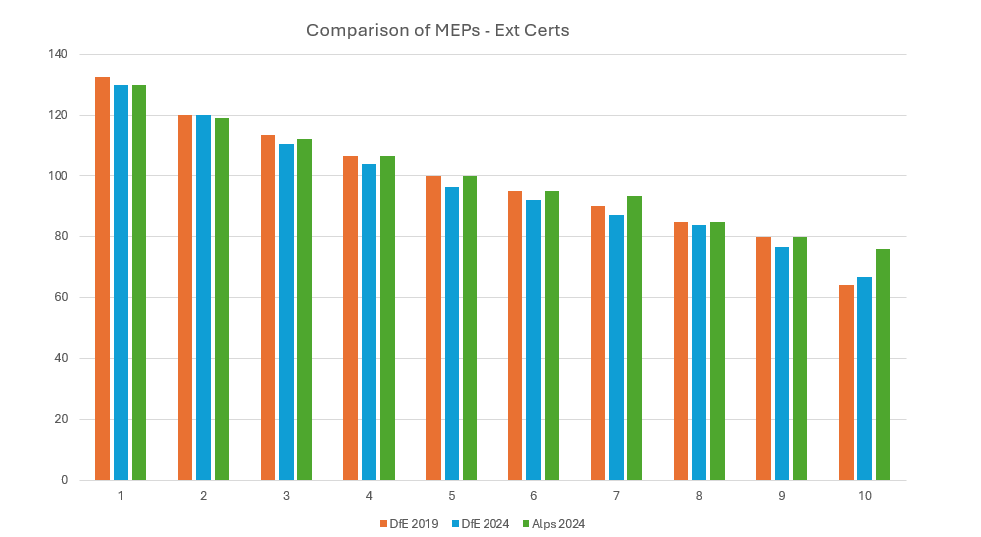
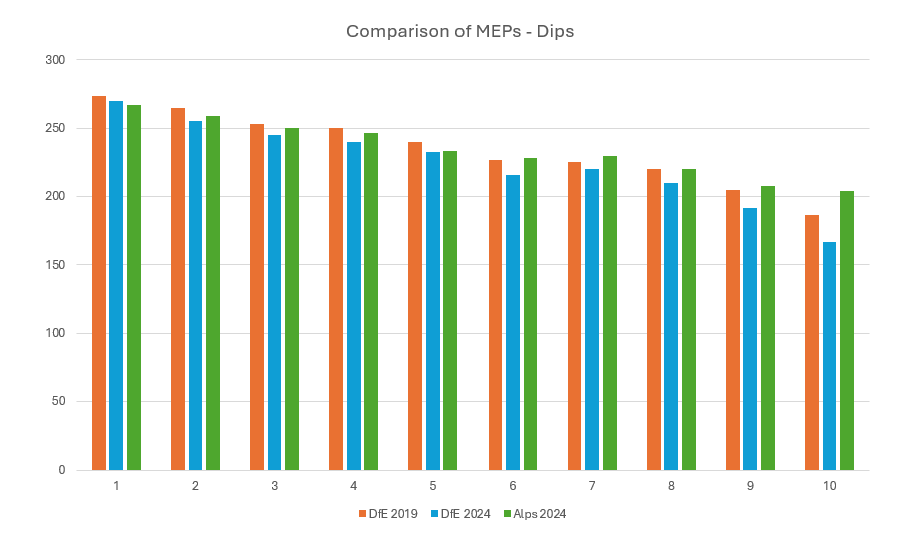
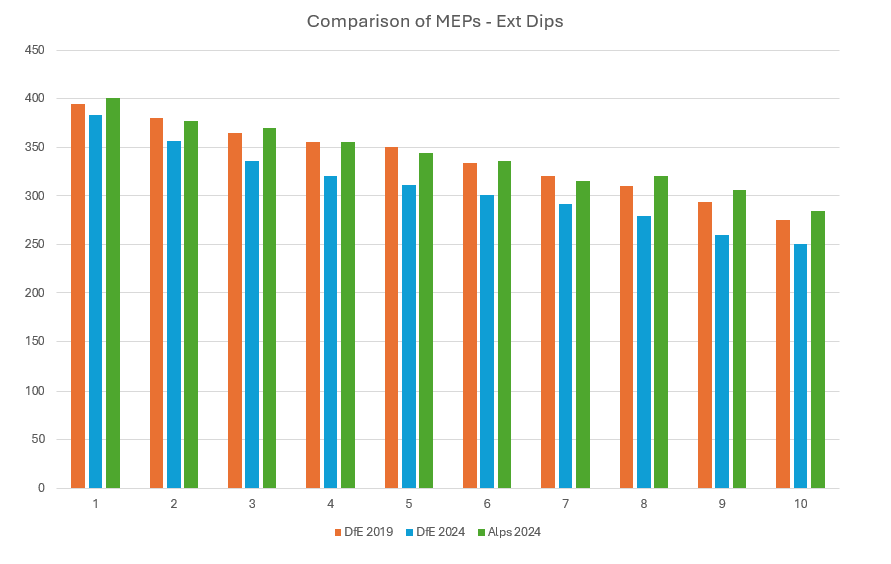

UAL MEPs and MEGs
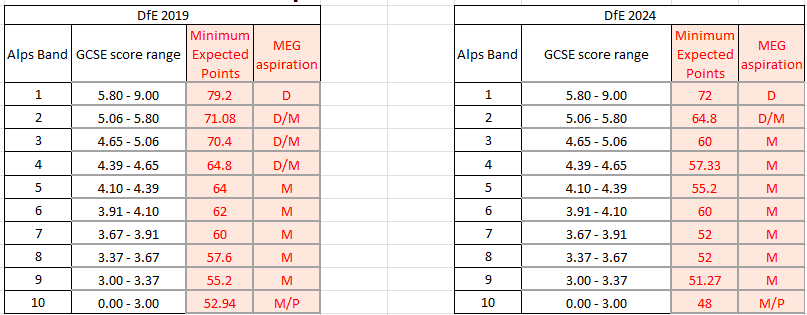

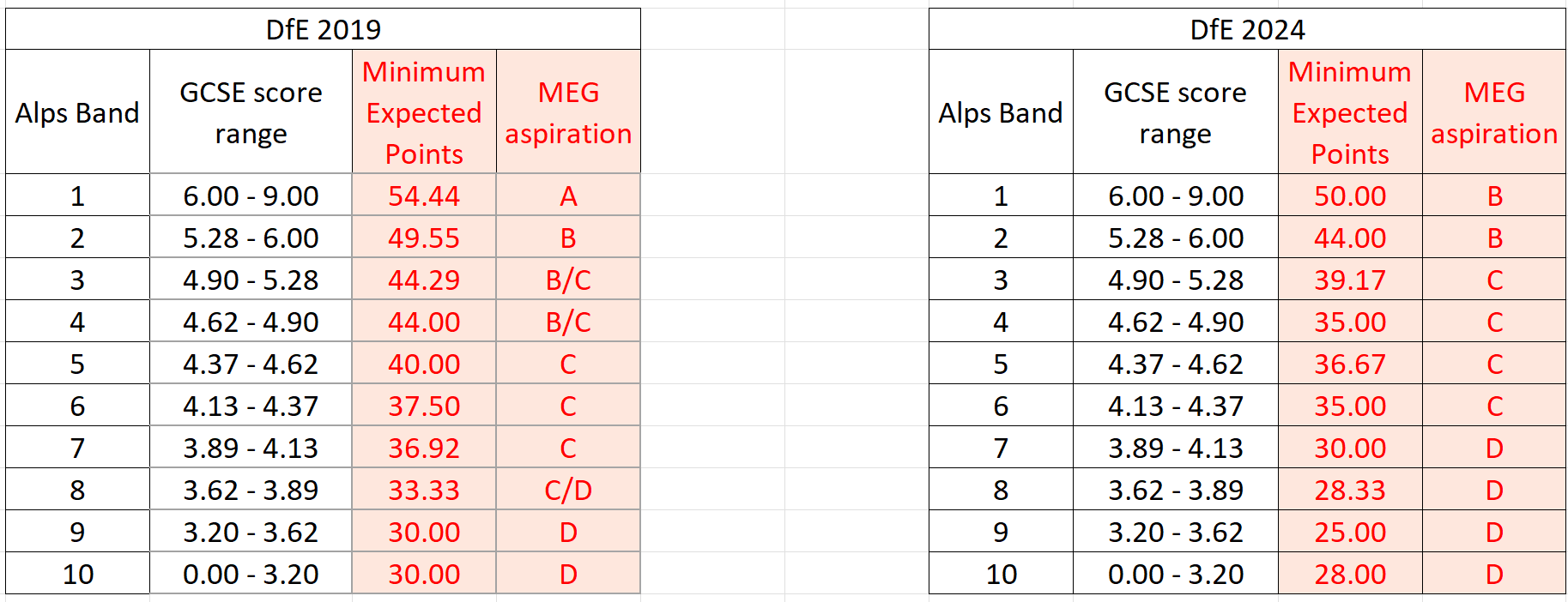
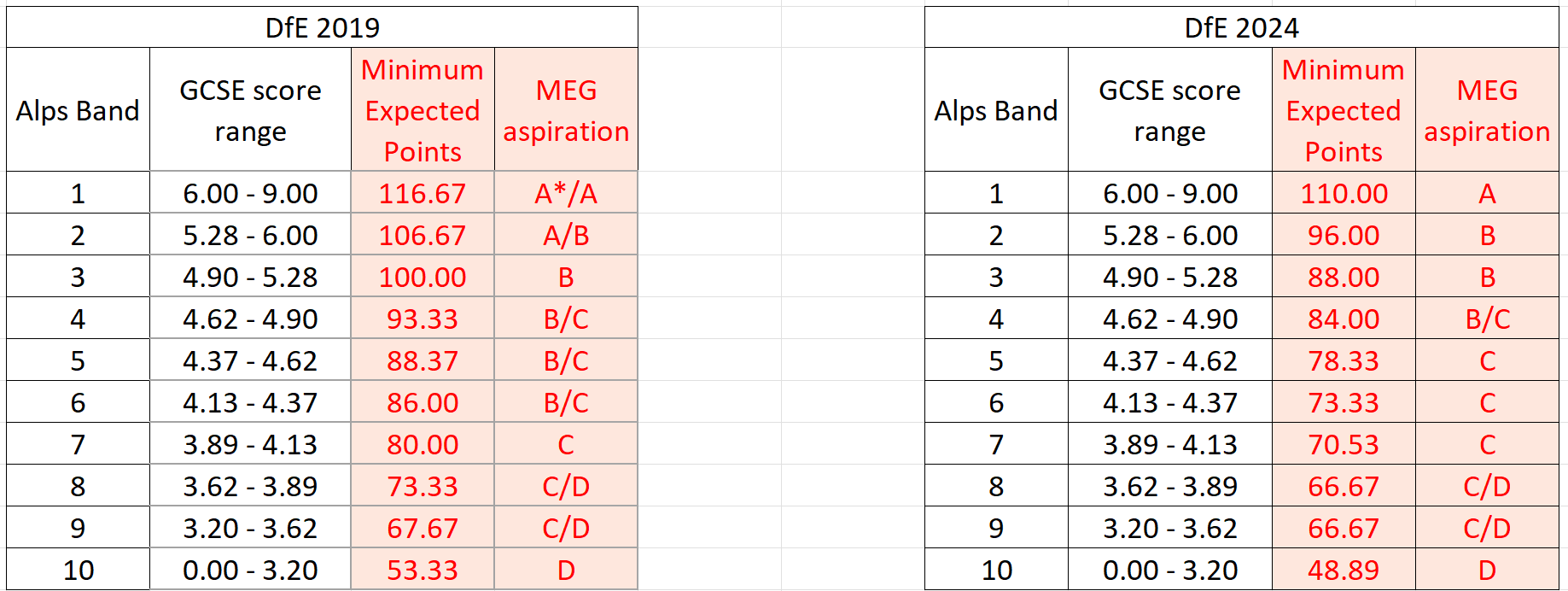
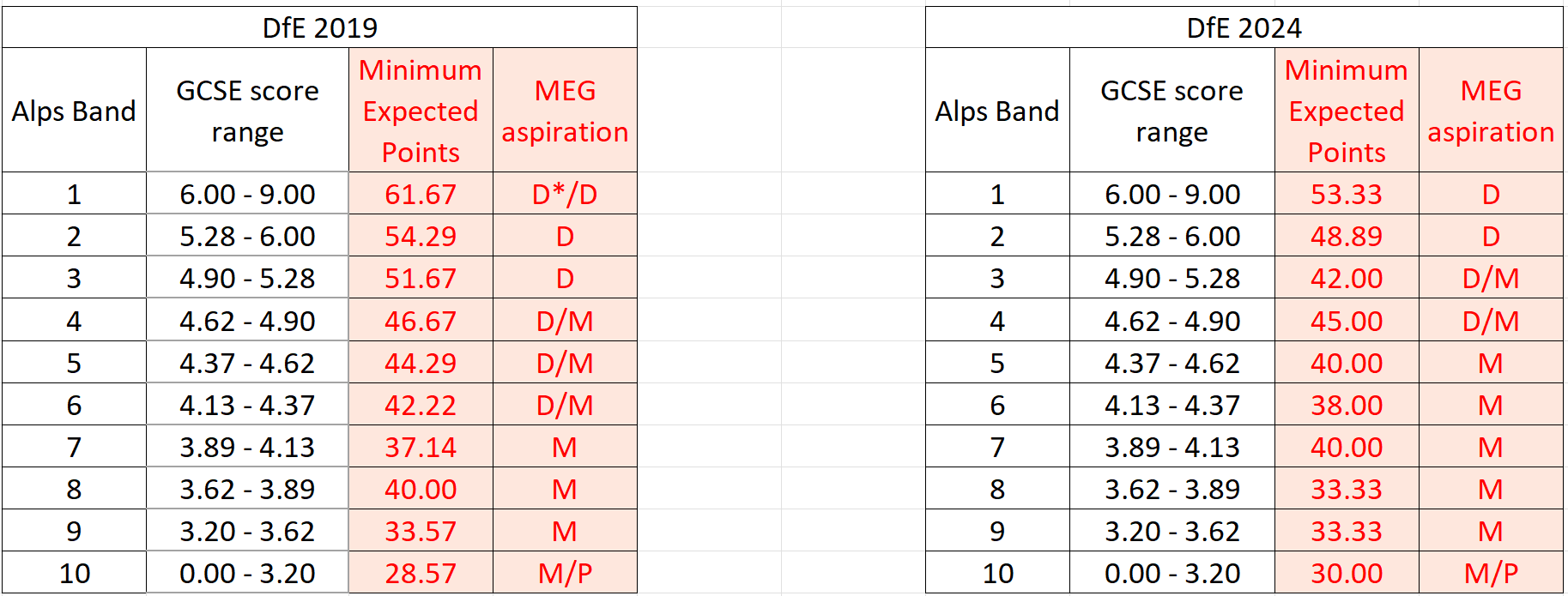
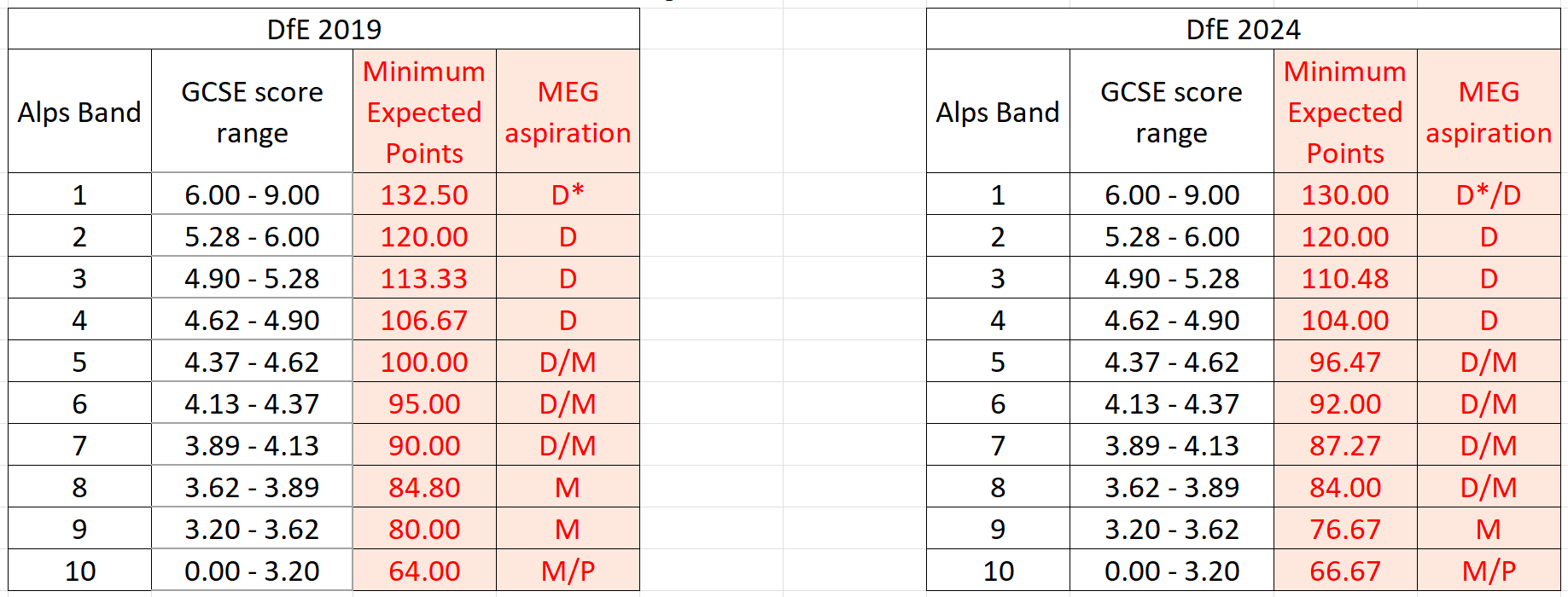
What happens now with the 2024 DfE national benchmark?
Therefore, the 2019 national dataset would be the most likely choice when monitoring this cohort across their KS5 courses.
Summary of the benchmarks in Connect and Summit
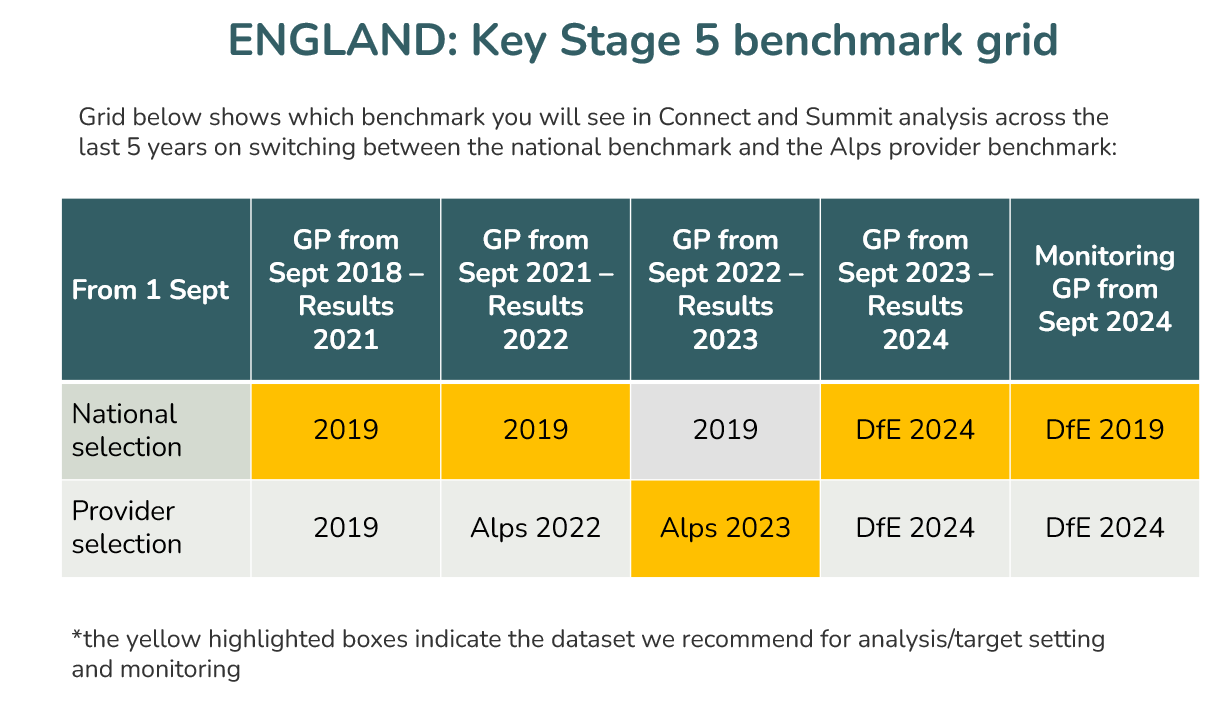
This article presents an overview of the findings from the Alps review of the DfE national dataset from 2024. It provides a comparison with the Alps provider benchmarks for England produced in August 2024.
It concludes with an overview of the recommendations for benchmark selection for analysing your 2024 results for vocational qualifications, and for monitoring your Year 13 and 12 cohorts across 2024/25 and 2025/26.
What we know about the 2024 outcomes for vocational qualifications : England
Single grade qualifications were awarded in line with 2019 at M & P but more generously at D & D*.
Double grade qualifications were awarded in line with 2019 below DD but more generously at DD+.
Triple grade qualifications were awarded in line with 2019 at DDD but were slightly more generous at grades D*DD+.
Prior attainment and cohort context
The prior attainment of students completing courses in 2024 was elevated when compared to students completing vocational courses in 2019. This was due to elevated KS4 examination outcomes in 2022.
The diagrams below illustrate the impact that elevated prior attainment has had on the proportional distribution of students in the national dataset across the 10 Alps prior attainment bands.
BTEC Ext Certs
The orange bars represent the percentage of students in each Alps prior attainment band who completed a level 3 BTEC Ext Certs in 2019 DfE national dataset. The blue bars represent the proportion in the 2024 DfE national dataset. The green bars show the proportions in the Alps provider benchmark for 2024.
We can see that there are higher numbers of BTEC students in the top 4 Alps bands in 2024 when compared to 2019.
Similar patterns follow for the level 3 BTEC Diploma and Extended Diploma
Comparison of DfE 2024 to the Alps Customer benchmark 2024
MEPs and MEGs - BTECs
The prior attainment differences outlined above give rise to a unique value-added context for the cohort completing vocational qualifications in 2024.
When we generate benchmarks for Alps analysis, we begin by identifying the MEP or the minimum expected points required by each Alps prior attainment band. The MEP is defined as the average outcome points achieved by providers at the 75th percentile in the national dataset.
In terms of Minimum Expected Points, the diagram below compares the target points required at the 75th percentile across Alps bands.
Once again the MEP comparisons are separated into Ext Certs, Dips and Ext Dips and compare MEPs achieved in the 2019 DfE dataset (orange), the 2024 DfE dataset (blue) and the 2024 Alps Provider dataset (green).
Extended Certs
Diplomas
Extended Diploma
When comparing the 2019 DfE and 2024 DfE datasets, whilst there is some variation, in most prior attainment bands, the MEPs generated from the 2024 DfE benchmarks are lower than those in the DfE 2019 data. 2019 MEPs are generally higher pointing to a different value-added progress picture.
Translating those MEPs into grades, we arrive at the Minimum Expected Grades or MEGs. We can see in the table below that the MEGs needed in 2024 are slightly lower across the bands and the qualifications than in 2019.
UAL MEPs and MEGs
Dips
UAL Ext Dips
WJEC L3 MEPs and MEGs
WJEC Certs A-E
WJEC Dips A-E
WJEC Certs DMP
WJEC Dips DMP
What happens now with the 2024 DfE national benchmark?
On 1st May 2025 we will release the 2024 DfE national benchmark into Connect and Summit.
The benchmark will be applied in the following way:
1. Retrospectively to all gradepoints between September 2023 up to an including Results 2024. This will replace the DfE 2019 dataset.
You will be able to look back at your Results from 2024 and view your analysis against the 2024 national dataset. Based on the analysis above, you might expect to see a slight upshift in your overall Quality Indicator Alps grade. The MEPs required at the 75th percentile are slightly lower on average.
If you have based your priorities against the 2024 Alps provider dataset you are likely to see some change also. The Alps provider dataset presents a slightly more exacting picture than the 2024 national for vocational qualifications.
2. Monitoring 2024/25 - the 2019 DfE national benchmark will remain the default benchmark for all gradepoints from September 2024 onwards. This means that on Results Day 2025, the default benchmark will be the 2019 DfE benchmark.
This is because we feel this is the most representative benchmark for this cohort in terms of prior attainment and outcome context.
The prior attainment for students completing courses in 2025 is derived from the KS4 examinations in 2023, where standard returned broadly to pre-pandemic levels. Outcomes in 2025 are expected to be broadly in line with pre-pandemic standards, and therefore value-added is predicted to be more similar to that of 2019 than that of 2024.
3. Monitoring 2024/25 - However we recognise that the 2024 DfE dataset has been able to generate value-added analysis for a larger number of vocational qualifications. Therefore we have decided to add the 2024 DfE dataset to the Provider toggle for these cohorts to allow you to have some ability to measure value-added.
You will need to switch your benchmark to the Alps Provider benchmark to access analysis for these additional qualifications. The caution from us is that these will measured against the 2024 value-added context rather than the 2019 context, which is likely to be more similar to the 2025 results.
We have been able to benchmark 46 new BTEC/Cam Tec qualifications. These are listed in the article https://support.alps.education/portal/en/kb/articles/2024-dfe-dataset-additional-l3-vocational-benchmarked-qualifications
Summer 2025 outcomes, value-added and the recommended benchmark
Your current Year 13 students (2025 outcomes) re set to return to a profile more similar to 2019:
- Students in Year 13 for 2024.25 sat GCSE examinations in 2023 where standards returned to levels more similar to 2019.
- Examination outcomes for this cohort remain to be established, but are likely to be similar to levels somewhere between 2019 and 2024 depending on the ability of the cohort.
Therefore, the 2019 national dataset would be the most likely choice when monitoring this cohort across their KS5 courses.
We will continue to run an analysis of the Alps provider dataset in the days following the 2025 outcomes.
Summary of the benchmarks in Connect and Summit
Related Articles
2024 DfE dataset - additional L3 vocational benchmarked qualifications - April 2025
One of the issues we have faced during the pandemic is the lack of a national dataset released by the DfE. Prior to the recent release of the 2024 national dataset, the 2019 DfE dataset represents the last time we were able to generate benchmarks. ...Alps Analysis of KS5 Vocational qualifications ENGLAND - SEPTEMBER 2024
This article presents a breakdown of the Alps Provider benchmark analysis for VTQs. We have a timeline in place for the release of our benchmarks, and therefore content will be added incrementally. The timeline: Release of BTEC and Cam Tec L3 ...A level England - Analysis of 2024 DfE national dataset - March 2025
2024 A Level Results in England This article presents an overview of the findings from the Alps review of the DfE national dataset from 2024. It provides a comparison with the Alps provider benchmarks for England produced in August 2024. It concludes ...Key information on the 2023 DfE national benchmarks for KS4 England - September 2024
This article gives a summary of the 2023 DfE national benchmarks for KS4 in England. These are the default benchmarks in Connect and Summit. Application of the 2023 DfE benchmarks Alps is one of the few companies to receive the DfE published the full ...Analysis and recommendations from 2024 DfE datasets - OVERVIEW ARTICLE
Overview article for all analysis from 2024 DfE datasets We are in the process of generating benchmarks from the national dataset published by the DfE following the 2024 examinations at KS4 and KS5. Alps is only one of seven companies that are given ...